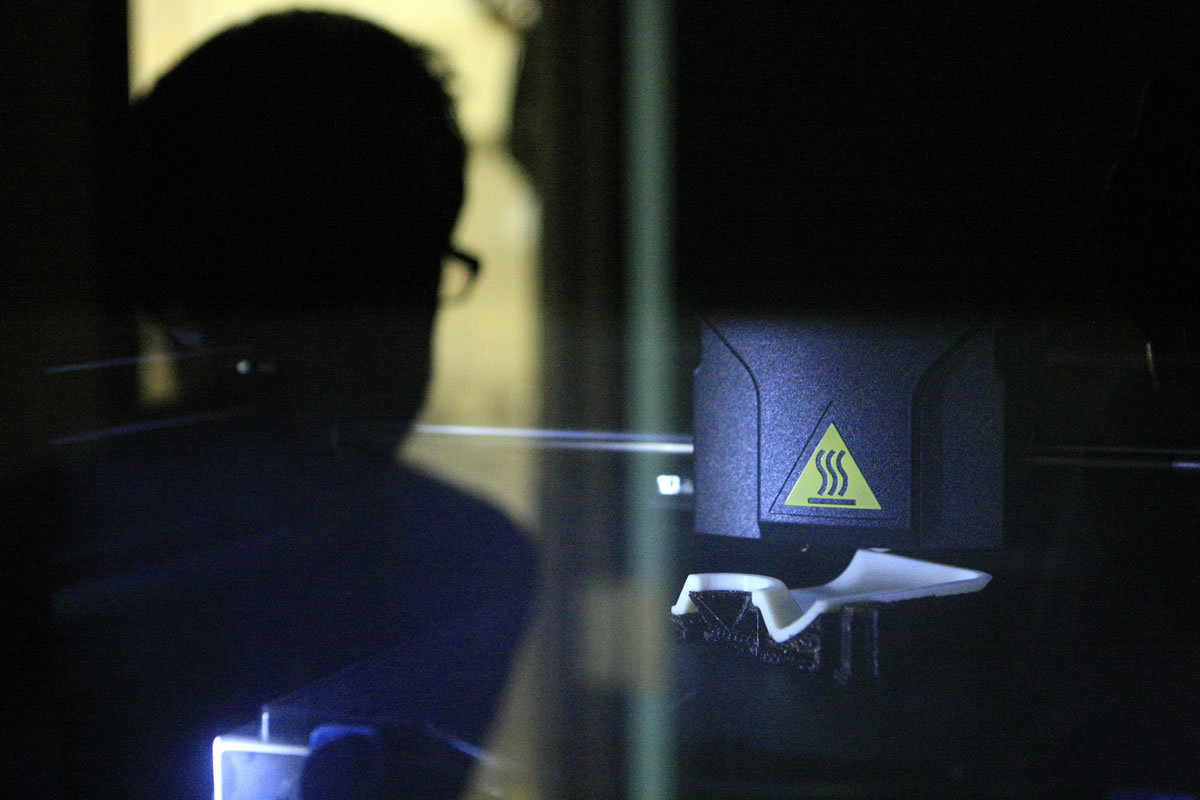What does a business do if the vintage aircraft part a customer needs hasn’t been made in decades?
For a solution, Airflow Systems of Capistrano Beach, Calif., turned to Rapid Tech at University of California-Irvine. Through the use of Rapid Tech’s cutting-edge 3-D manufacturing technology, the aircraft parts manufacturer got what it needed in exchange for the cost of the materials required to do the work.
“I believe that small entrepreneurial businesses like ours will be the backbone of manufacturing innovation in the U.S.,” said Bill Genevro, president of Airflow Systems. “But we can only do this with the help of entities like Rapid Tech.”
Rapid Tech is in the UC-Irvine Engineering building and has been funded by Saddleback College and grants from the National Science Foundation. The nonprofit’s primary function is teaching students advanced manufacturing techniques, but it also provides low-cost help for businesses.
“We do hundreds of projects each year, dozens of outreach and training events,” said Ben Dolan, director of design and engineering research projects at Rapid Tech.
Rapid Tech’s specialty is a form of modeling in which a printer uses digital input from a computer to create three-dimensional solid objects, thin layer by thin layer. The printer head extrudes a small amount of plastic or other material, making several passes before the form begins to take a recognizable shape.
Third revolution
The process enables users to quickly design and refine prototypes without resorting to the more costly and time-consuming process of having a metal part forged and repeating that procedure to correct imperfections.
Each of the projects uses one of the more than 20 3-D digital printers and other equipment at Rapid Tech. Because they have become increasingly refined and sophisticated, these so-called desktop factories are being referred to as the third manufacturing revolution.
“After the digital revolution, this type of engineering work was considered lowbrow,” said UC-Irvine mechanical engineering professor Marc Madou. “Now we’re helping to create the supply chain of the future.”
But the process demands considerable computing power, so much so that when Dolan needed new desktops, the only kind that came ready to use, without extensive upgrades, were some of the world’s fastest boutique game computers, such as those made by Alienware. The best 3-D printers cost $50,000 to $1 million.
This is what puts the technology out of reach of many small- to medium-sized businesses and even some of the larger and more established ones.
Genevro’s Airflow Systems is a small firm that has been designing, building and selling FAA-certified aircraft equipment, such as engine intercoolers, since 1987. Genevro says he has used Rapid Tech’s help to save weeks and sometimes months of production time.
One of the more esoteric projects involved re-creating parts for a 1938 Japanese Zero fighter plane, using only the pitted, corroded and incomplete original parts. This was for a restoration project for the Evergreen Aviation Museum in McMinnville, Ore.
The technology is just as useful in designing new and improved parts for machines currently in production.
Regional hubs
The Obama administration has proposed the development of as many as 15 regional hubs or Institutes of Manufacturing Innovation. Part of their function would be to help U.S. manufacturers use advanced manufacturing techniques that would give them a competitive edge.
Rapid Tech officials say they are already doing that, but they caution that they don’t take on just any project that a business might be interested in developing.
“We decide on a case-by-case basis,” Tackett said. “We ask ourselves, ‘Is there intellectual merit to the project? Will it help train students? Will it help other companies?’ That’s what we are looking for.”



